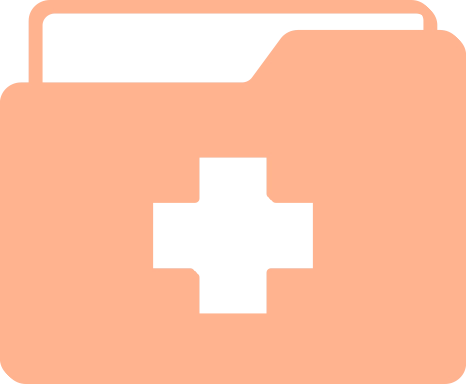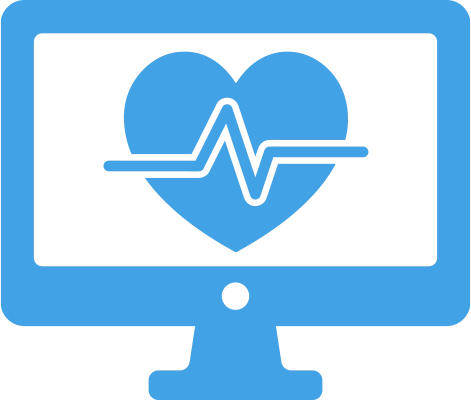
EHR with billing services
Enhance patient care with all the benefits of our user-friendly electronic health record (EHR) service—plus streamlined, integrated billing services. Together this packaged platform frees up your time to focus on delivering the best care to your patients.
Schedule a demoSolutions tailored to your practice’s billing needs
Our billing experts have 30+ years of experience to better understand your current challenges and technical needs. Did you know?

Fully Integrated Billing Services
Our dedicated billing team eases the burden of medical billing
Get paid what you’re owed with Practice Fusion billing services
Practice Fusion Billing Services aims to ease the burden of medical billing for independent practices like yours, relieving you from its complexities and demands—with everything from credentialing services to in-depth financial reporting.
Your dedicated billing team draws from over 30 years of experience across 45+ specialties. Our billing experts are dedicated to maximizing our customers' collections and delivering an exceptional experience.
Billing with ease

EHR
Cloud-based EHR with automatic system updates, accessible from any device, anytime
Focus on what matters most with our renowned EHR
The intuitive Practice Fusion EHR platform, with ePrescribe and ECPS*, is designed based on your day-to-day experience. A free library of customizable charting templates enables you to quickly e-prescribe, send lab and imaging orders, and instantly share results right from your patient’s electronic health record.
All of the integrated features of our one-of-a-kind EHR and additional solutions focus on one overarching goal—to empower you to save time on clinical workflows so you can focus on your patients.
Stay on the leading edge of care

Dedicated Support
Real people are trained and certified to help you via phone, chat, and support tickets
Certified Phenomenal Support™ that’s dedicated to you
Get support from real people certified and trained to help in a variety of ways. We can help you troubleshoot specific issues—either by submitting a support ticket, or by contacting us live via phone or chat.
Ways you can tap into our team

Personal Health Records
Free portal access for patients to take an active role in their health
Help your patients play an active role in their health
The Patient Fusion personal health record is a built-in patient portal that aligns seamlessly with the Practice Fusion EHR. This free portal empowers patients to stay up to date and informed about their own medical records.
Your patients or their authorized representatives can electronically access their medical records to view, download, or transmit any data that’s been shared with them.
Multiple care points

Labs and Imaging
Access to hundreds of lab and imaging centers
Labs and imaging
Submit lab and imaging orders faster and receive results directly in your patient's chart with an ordering workflow that’s far simpler than paper.
You can complete lab and imaging orders directly from your EHR and save frequently used panels as templates for faster re-ordering in the future. Easily track patient health and order fulfillment with easy-to-use flowsheets. View a collated list of all orders and results to easily monitor patient adherence.
Smart lab results that are instantly shareable
Get paid what you’re owed with Practice Fusion billing services
Practice Fusion Billing Services aims to ease the burden of medical billing for independent practices like yours, relieving you from its complexities and demands—with everything from credentialing services to in-depth financial reporting.
Your dedicated billing team draws from over 30 years of experience across 45+ specialties. Our billing experts are dedicated to maximizing our customers' collections and delivering an exceptional experience.
Billing with ease
Focus on what matters most with our renowned EHR
The intuitive Practice Fusion EHR platform, with ePrescribe and ECPS*, is designed based on your day-to-day experience. A free library of customizable charting templates enables you to quickly e-prescribe, send lab and imaging orders, and instantly share results right from your patient’s electronic health record.
All of the integrated features of our one-of-a-kind EHR and additional solutions focus on one overarching goal—to empower you to save time on clinical workflows so you can focus on your patients.
Stay on the leading edge of care
Certified Phenomenal Support™ that’s dedicated to you
Get support from real people certified and trained to help in a variety of ways. We can help you troubleshoot specific issues—either by submitting a support ticket, or by contacting us live via phone or chat.
Ways you can tap into our team
Help your patients play an active role in their health
The Patient Fusion personal health record is a built-in patient portal that aligns seamlessly with the Practice Fusion EHR. This free portal empowers patients to stay up to date and informed about their own medical records.
Your patients or their authorized representatives can electronically access their medical records to view, download, or transmit any data that’s been shared with them.
Multiple care points
Labs and imaging
Submit lab and imaging orders faster and receive results directly in your patient's chart with an ordering workflow that’s far simpler than paper.
You can complete lab and imaging orders directly from your EHR and save frequently used panels as templates for faster re-ordering in the future. Easily track patient health and order fulfillment with easy-to-use flowsheets. View a collated list of all orders and results to easily monitor patient adherence.
Smart lab results that are instantly shareable
*Electronic Prescriptions for Controlled Substances (EPCS) is only available in the 50 US states and the District of Columbia
Our solutions, your outcomes
At Practice Fusion, we are dedicated to helping you reach your clinical and financial goals.
Time
for our physicians to do what they love, whether that’s practicing the art of medicine, or spending quality time away from the office.
Clean claims submissions
to ensure your claims are paid the first time, minimizing the high costs that come with denials and mitigating them.
Transparency
into your financial performance with dedicated expert billers and financial reporting.
Operational efficiency
reducing the additional burden and cost of having to manage your billing staff.
1. Source: https://www.mgma.com/mgma-stat/investing-in-time-management-to-make-space-to-address-stress-burnout
